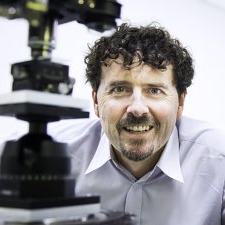Advanced Humidity Sensors
A special issue of Sensors (ISSN 1424-8220). This special issue belongs to the section "Physical Sensors".
Deadline for manuscript submissions: closed (31 December 2020) | Viewed by 4082
Special Issue Editors
Interests: waveguide lasers; short to mid-infrared fibre lasers; ultra-fast laser modification of materials; non-linear frequency conversion
Special Issues, Collections and Topics in MDPI journals
Interests: point/distributed sensors; skew ray; optical microfiber; femtosecond laser inscription
Special Issues, Collections and Topics in MDPI journals
Special Issue Information
Dear Colleagues,
The measurement of relative humidity is crucial for most modern industries, such as refrigeration, cargo, electronics, weather forecasting, and greenhouses. These diverse areas require different sensor specifications, and even an “established” technology area such as habitat control and refrigeration (HVACR) requires bespoke solutions in areas such as museums (specific exhibits), transportation (e.g., in-cabin climate control, under hood, and on engine), and healthcare (e.g., incubators, sterilization, patient monitoring, cleanrooms, respiratory, and ventilators).
Smart cities and agriculture of the future depend on information from such sensors. Thanks to innovations in functional materials, sensing structures, and new optical phenomena, our scientific communities generate a continuous stream of advanced humidity sensors. This Special Issue attempts to collect the latest developments in humidity sensing, whether optically- or electrically-based, in terms of new designs or new applications. We especially encourage review articles describing the current state-of-the-art.
Potential topics include, but are not limited to, the following:
- Humidity sensors for quality control in industries (e.g., refrigeration, cargo, electronics, weather stations, greenhouses, and manufacturing).
- Humidity sensors for heating, ventilation, air conditioning, and refrigeration (e.g., peripheral devices, museums and institutions, and humidifiers/dehumidifiers)
- Humidity sensors for healthcare (e.g., incubators, sterilization, patient monitoring, cleanrooms, respiratory, and ventilators).
Prof. Dr. David Lancaster
Dr. George Y. Chen
Guest Editors
Manuscript Submission Information
Manuscripts should be submitted online at www.mdpi.com by registering and logging in to this website. Once you are registered, click here to go to the submission form. Manuscripts can be submitted until the deadline. All submissions that pass pre-check are peer-reviewed. Accepted papers will be published continuously in the journal (as soon as accepted) and will be listed together on the special issue website. Research articles, review articles as well as short communications are invited. For planned papers, a title and short abstract (about 100 words) can be sent to the Editorial Office for announcement on this website.
Submitted manuscripts should not have been published previously, nor be under consideration for publication elsewhere (except conference proceedings papers). All manuscripts are thoroughly refereed through a single-blind peer-review process. A guide for authors and other relevant information for submission of manuscripts is available on the Instructions for Authors page. Sensors is an international peer-reviewed open access semimonthly journal published by MDPI.
Please visit the Instructions for Authors page before submitting a manuscript. The Article Processing Charge (APC) for publication in this open access journal is 2600 CHF (Swiss Francs). Submitted papers should be well formatted and use good English. Authors may use MDPI's English editing service prior to publication or during author revisions.
Keywords
- Optical sensors
- Electrical sensors
- Humidity sensors
- Hygrometers
- Point sensors
- Distributed sensors
- Moisture monitoring
- Humidity monitoring







